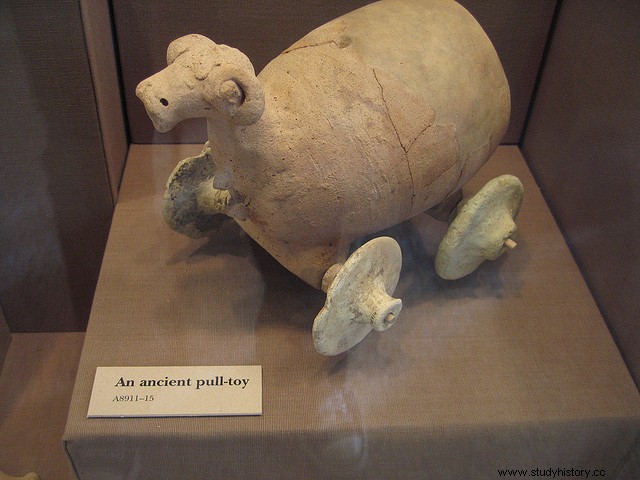If we travel to Iraq and head towards the Zagros Mountains , on the border with Iran, about 40 km from Baghdad, and very close to the Diyalah River, we will find an archaeological site. It is the ancient Sumerian city of Eshnunna . At first glance, the site doesn't look like much. The old Sumerian ruins are always turned upside down. When a building grew old or deteriorated, the Sumerians simply razed it to the ground and built a new one on top of the rubble. For this reason, archaeologists find it very difficult to determine if a wall belongs to a palace, a temple or a simple courtyard. In the case of the city of Eshnunna, in the 30s of the 20th century they limited themselves to excavating a wide trench of about 5 meters wide that crosses the site area. Every time they came across something that seemed interesting, they widened the search area. In this way, the governor's palace was discovered and, next to it, the remains of a temple that is thought to have been dedicated to the god Ninazu , an infernal divinity related to healing and protector of the city -between the two rivers, hell was not a place of condemnation and punishment, nor were infernal beings necessarily "evil"-.
In one of the rooms of the temple ruins, several objects were found that caught the attention of archaeologists. These were animal figures made of terracotta (lambs, gazelles, elephants, dogs, lions...). The first temptation was to classify them as votive offerings, but that did not make any sense, since in Sumeria the votive offerings used to be figures of avatars of gods -a dragon in the case of Ninazu- or of human beings. Because of this, they were registered as “cult objects”. As a general rule, in the world of archaeology, when something is cataloged as a cult object, without clearly appearing to be so, it can be translated as:“I have no idea what this is ”.

A few years ago, some researchers observed that these cult objects were even more anomalous, since some had wheels and/or rings. They finally realized that they were… TOYS! And what did those toys paint in the precincts of a temple? Well, the answer is simple:it was the precinct of the nursery, the oldest identified so far . And it is that the Sumerians lived obsessed with childhood. Seven out of 10 children did not reach puberty due to fevers, since the Sumerian cities, especially those in the south, used to be surrounded by swamps. The offspring of important people were cared for in temple and palace nurseries while their parents went about their chores. We have found personnel lists where it is verified that there were not only nurses, servants or slaves at their service, but also health personnel. The Sumerians were therefore no strangers to the ancient art of diaper changing.
When we look at the old ruins of disappeared cities, we tend to think of wars, of victorious or defeated armies. Rarely do we get the chance to catch a glimpse of a group of children pulling their toy animals on strings. It's nice to know that after 4,000 years, children are still children. Perhaps humanity is not doomed after all.
Contributed by Joshua BedwyR author of In a Dark Blue World
